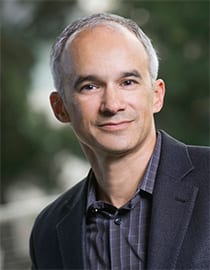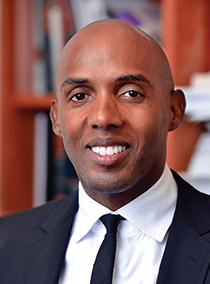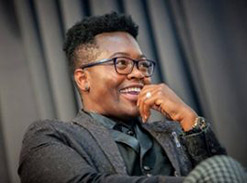By Andrew Cohen
From state legislature sessions to city school board meetings, fiery attacks on Critical Race Theory continue to ignite heated debates and accusations. According to Berkeley Law and UCLA scholars at a recent webinar event, they also continue to spread misinformation.
Connecting such attacks with a calculated effort to foment racial division, the scholars probed the growing preoccupation with CRT, “cancel culture,” and the “woke agenda.” They also clarified what CRT actually is — and why it has become a target.

“Critical Race Theory was introduced in the 1970s as a legal theory about the relationship between law and racial inequality,” said Berkeley Law Professor Khiara M. Bridges, author of the 2018 book Critical Race Theory: A Primer. “The term refers to interrogations into the role law plays in reaffirming and reinstituting the racial hierarchies that are so obvious in our country today. But Critical Race Theory, that label, is now wielded as an epithet.”
Berkeley Law Professor Ian Haney López said that while liberal legal theory saw race as interpersonal and law as standing outside of society, Critical Race Theory asserts that racism is also largely legal and economic — and that law is structured by race and has historically predominantly reinforced white dominance.
“From the very beginning, critical race theorists said we must try to make society better,” explained López. Author of the book Dog Whistle Politics, which describes how politicians use veiled racial appeals to persuade white voters to support policies that favor the rich yet threaten their own interests, he said Critical Race Theory “is simultaneously an interrogation of racism’s role in society and a political project to move us toward a more racially egalitarian society.”
López added that recent attacks on CRT flow from “a class war agenda — low taxes on the rich, pro-corporate economic regulation — obscured by a strategy to promote social strife and racial division … That’s why the party of big business weaponizes Critical Race Theory and cancel culture.”
An effective pushback
Panelists pointed to the strategic timing of CRT being elevated as a hot-button issue on Fox News in September 2020 — shortly before the presidential election — after a tense summer of massive racial protests following the death of George Floyd and other unarmed Black people killed by police.

López said the protests threatened the power elite, in particular seeing the “record-shattering” size of the crowds; how outrage at racism against Black people drew support from Latinx, Asian, and white Americans; and how large protests occurred in areas with hardly any Black population.
“That sparked a strong effort to push back against Critical Race Theory, and a successful one,” he explained. “Anti-Blackness has been exploited as a tool of political division. To maintain that tool, the right seeks to recast racial justice protests as instead anti-white racism. But we have to ask ourselves: Is the real threat to our families coming from Black people, or from the wealthiest people in our country who seek to control the government and other key institutions?”
The backlash really gained traction, Bridges observed, when critics claimed CRT was being taught to K-12 students and framed their opposition to it as protecting children from a racialized threat.
“That explains the passion, fear, and anger we see at these school board meetings,” she said. “The attacks against Critical Race Theory are a continuation of attacks against perceived threats non-white people pose to our institutions, threats the Trump campaign sounded for years: Calling Mexicans crossing the border criminals and rapists, identifying those who walked alongside white supremacists in Charlottesville as very fine people, signing a Muslim travel ban into law, calling COVID the Chinese virus and the kung flu, and so on.”
The label game

UCLA Law Professor Devon Carbado asked how society accounts for the precariousness of a group once oppressed by slavery and Jim Crow laws that today is marginalized, over-incarcerated, under-employed, overrepresented in homelessness, and underrepresented in political leadership and leadershp generally.
“One answer is that Group A isn’t working hard enough, not pulling itself up by its bootstraps,” Carbado said. “Another answer is about the way racism has worked and its continuing legacies. Critical Race Theory pivots into the latter direction in the sense of suggesting that contemporary Black disadvantages are a function of the way racism has historically operated and its contemporary manifestations.”
Part of what’s surprising about racial discourses today, he added, is how they reflect the idea that there’s something wrong with Group A that explains its plight. “Even when people stipulate that Group A experienced slavery and Jim Crow, they still end up essentially blaming Group A for the disadvantages they experience,” Carbado said. “None of the weaponizing of Critical Race Theory is about Critical Race Theory itself; it’s about using CRT to engender racial division and undermine multiracial coalition building.”
Lopez agreed, noting how some CRT critics argue that the government should cater to the rich because they are the supposed main engines of social progress, and in turn characterize New Deal-style government as a radical redistribution of wealth akin to Marxism. “They’d have you believe the threat isn’t coming from those who control so much, but really comes from the people asking for racial inequality,” he said.

Just as Carbado stressed that no significant moment of American racial reform occurred through unified consensus, his UCLA faculty colleague SA Smythe said that today’s racial, ecological, and economic crises can only be surmounted by changing the country’s major social systems.
“Law as it’s structured now cannot solve the catastrophes we face,” Smythe said. “In this moment of interlocked catastrophes, there’s a sense that we can and must reimagine our connections to each other to reform what our social institutions should look like, including our democracy, economy, prison system, and immigration system. We can see that the things that will save us from authoritarianism are the things that must drive social change.”
The crux of cancel culture
Bridges drew an ironic distinction between canceling and what’s now known as cancel culture.
“If we look at canceling, most folks would find its origins in Black Twitter and marginalized communities online,” she said. “Canceling has been a weapon of the weak, a way that relatively disempowered people exercise autonomy by withdrawing support from someone who has behaved badly. Once the right weaponized this and termed it ‘cancel culture,’ it became used to describe acts that allegedly threaten the very foundations of our institutions and democracy.”

Berkeley Law Professor Russell Robinson, who moderated the event with fellow Berkeley Law Professor and UC Berkeley Center for Race and Gender Director Leti Volpp, questioned the actual effect of purported cancel culture. He mentioned several celebrities who were supposedly cancelled for various reasons — including actor Kevin Spacey (accused of sexually assaulting several men), Harry Potter series author J.K. Rowling (transphobic comments), and country singer Morgan Wallen (caught saying the N-word on video) — yet remain multi-millionaires and are still working.
Discussing parallels with the response to CRT and the #MeToo movement, he said, “The public discourse with #MeToo focused more about whether it had gone too far. There was little attention on justice for victims, but lots of worry about what will become of these men in the wake of their mistakes. By 2019 the conversation had changed to cancel culture, and even former president Barack Obama took a swipe at cancel culture in 2019.”
In describing how CRT is depicted in the media and pop culture, panelists said ascribing it to cancel culture is an intentional move to make it seem aggressive, overreaching, and threatening. Lopez cited polls showing that overall support for the Black Lives Matter movement in January 2021 had receded to where it was before the 2020 protests, and that white support was 10% lower than in January 2020.
“As a form of dog whistle politics, this is an attempt to use language that on the surface doesn’t mention race but is designed to trigger racial anxiety,” Lopez said. “That theme — gangbanger, anarchist, terrorist, knife-wielding illegals flooding across the border — is being revived in attacks on CRT. The message is that people who demand racial justice are motivated by a hatred of white people, while demands for equality are portrayed as instead efforts to invert the hierarchy.”
Said Bridges: “If structural racism is a thing, if anti-Blackness manifests in multiple ways, then those Black Lives Matter protests were about something real, something we can transform. But if structural racism is a myth offered by scholars who hate white people, those people in the streets were the madmen and the racists, and the most appropriate response is to ignore them.”